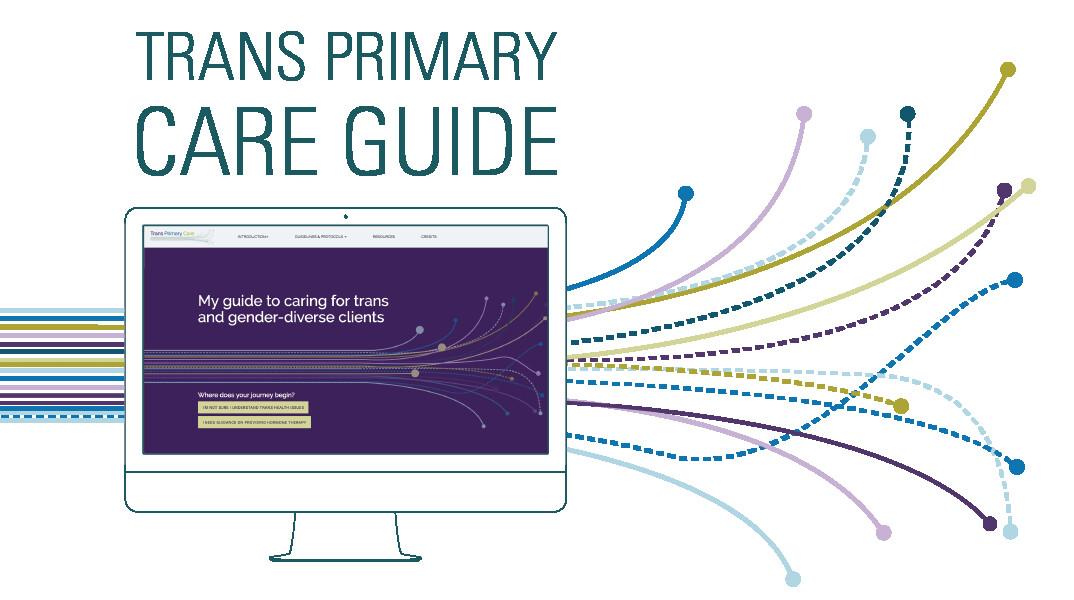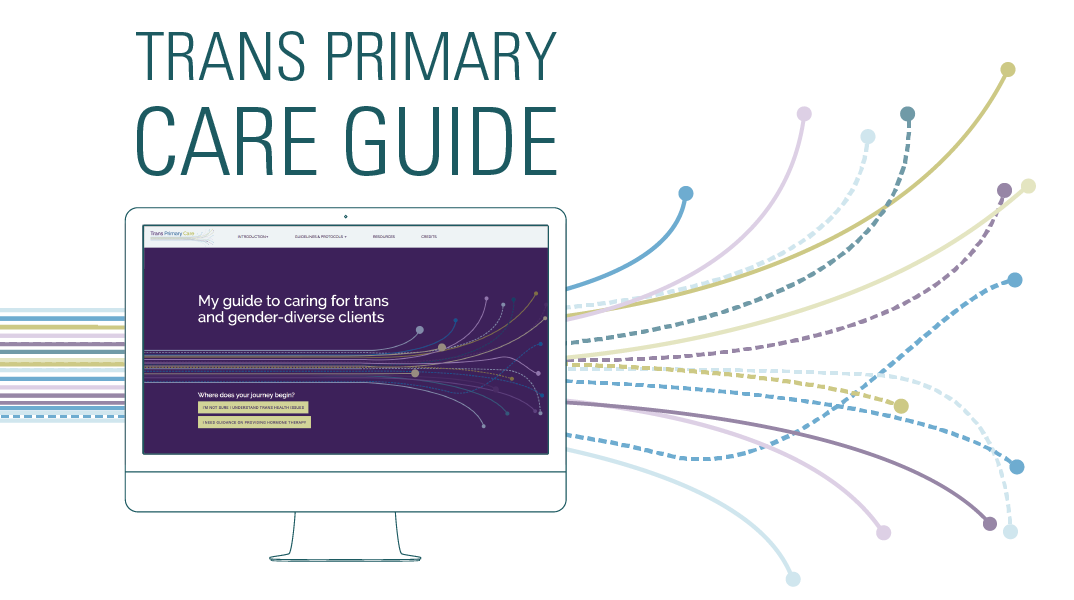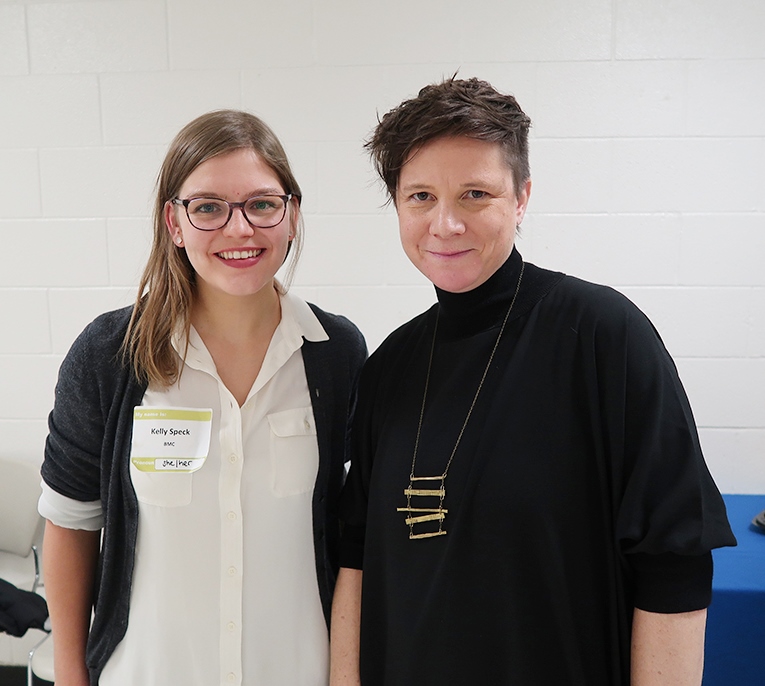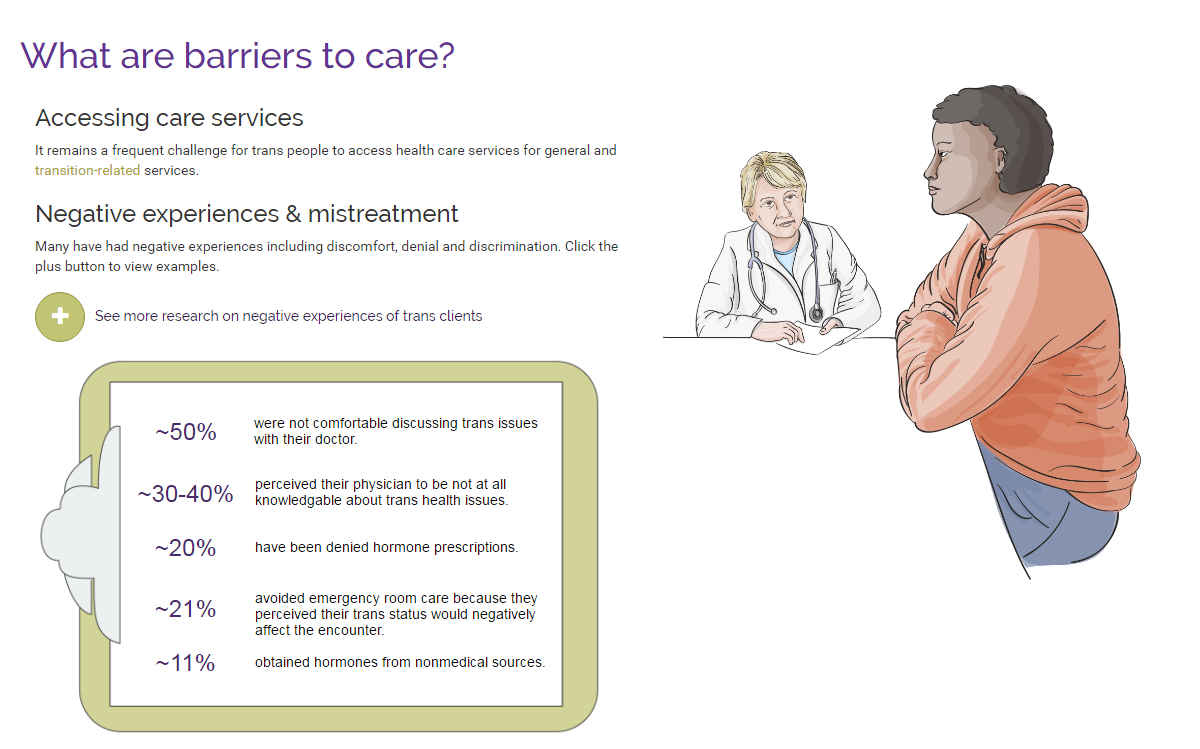Breadcrumbs
- Home
- MD/PhD Program
- News
- Partnering for better health in the Transgender community
Partnering for better health in the Transgender community

Tabitha Chan

Launched November 24, the Trans Primary Care Guide is an interactive, online visual tool aimed at providing primary care providers the knowledge and guidelines they need to confidently care for trans people.
 A collaborative project between the Sherbourne Health Centre (SHC), Rainbow Health Ontario (RHO) and the University of Toronto, the Trans Primary Care Guide was designed by Kelly Speck, recent graduate of the Master of Science in Biomedical Communications program at U of T, under the supervision of Dr. Shelley Wall and Dr. Jodie Jenkinson as well as MD Program LGBTQ Theme Leads Dr. Ed Kucharski and Dr. Amy Bourns (currently on maternity leave).
A collaborative project between the Sherbourne Health Centre (SHC), Rainbow Health Ontario (RHO) and the University of Toronto, the Trans Primary Care Guide was designed by Kelly Speck, recent graduate of the Master of Science in Biomedical Communications program at U of T, under the supervision of Dr. Shelley Wall and Dr. Jodie Jenkinson as well as MD Program LGBTQ Theme Leads Dr. Ed Kucharski and Dr. Amy Bourns (currently on maternity leave).
In her initial research of health care gaps in Ontario, Speck was surprised at the lack of research, education and information there was about LGBTQ health care, espeically in trans care, and in speaking with physicians and nurses, she noted that many of their hesitations stemmed from a lack of confidence. “Many of them weren’t against giving care to transgender people; they just didn’t know how what their options were or how to approach them. What I learned in those sessions was that a lot of the medical knowledge that is required to provide this care, they already have, they just needed to learn how it is applied to trans care,” said Speck.
The online guide serves to increase awareness about standards of care and to aid primary care providers who may not have experience in giving trans services in becoming proficient at giving culturally-sensitive and trans-sensitive care.
Dr. Kucharski has been working in LGBTQ health for over a decade and contributed to the project by reviewing the guidelines. As a practicing primary care provider, he states “When you’re a primary care provider, you don’t often have a lot of time with patients and having something that is easily accessible and easy to navigate, to answer questions or even just look at after a busy day in the office is a huge asset,” says Kucharski.
A host of resources exist across the web, however, over the last 15 years, guidelines for providing care to trans patients have been refined. SHC released a widely available version of guidelines and protocols in 2009. Following this, Dr. Bourns led the most recent revision of the guidelines which were released in 2015. These guidelines align with the Standards of Care published by the World Professional Association of Transgender Health.
Speck saw this publication as an opportunity to apply her skills in biomedical visual communication to further the accessibility of these written guidelines by developing online interactive design as part of her Master’s research project.

Receiving feedback from a variety of stakeholders was crucial to the development of the guide. Within the design and development phase, Speck gathered feedback through formative evaluations and online surveys from trans participants and primary care providers. Trans participants were able to have their voices heard in how they would like to be represented in Speck’s illustrations and designs.
Dr. Kucharski believes that the guide’s content is easily digestible and will meet the needs of all physicians – including those looking to improve their ability to provide
trans primary care, as well as those who have never provided care, but are interested in doing so. “I think for those people who are in the pre-contemplative state of thinking about doing this, this might push them over and allow them to feel like they can practice a lot more competently and safely, both medically competent and culturally competent,” he said.
As LGBTQ Theme Lead, Dr. Kucharski is advancing the integration of LGBTQ health and the principles outlined in the guide into the medical school curriculum. Providing a foundation to learn how to care for the transgender population, students will be taught about the appropriate language that should be used when providing care. “We are developing a module on cross sex hormones,” Dr. Kucharski continues. “And with the biomedical communications team, we’re actually looking at developing virtual patients for students to interact with. We have also invited trans-identified providers and trans community members to speak with medical students about providing good care to their communities.” Students will also now have access to the guide online.
The collaboration between SHC, RHO and U of T continues, and a project that works to further strengthen the integration of trans patient care in the medical curriculum is underway.
“As a program of Sherbourne Health Centre, RHO’s role is to build capacity across the province for health and social service providers around a breadth of LGBTQ topics, in order to improve both access to care and health outcomes for LGBTQ people and communities,“ says Devon MacFarlane, Director, RHO. “Exploring new ways to reach and engage providers is part of that, and in this case, includes the development of this online tool that is easy to navigate and can save providers time. It was important for RHO to work with Kelly on this project to make existing clinical guidelines more accessible. This can support providers in providing better care to trans patients.”
Speck is passionate about how much can be done through collaboration, “I think these community-academic partnerships are so important because they help to recognize community health concerns while collaboratively figuring out feasible solutions," concludes Speck. "If we can partner on these topics, we can change things.”
An event launching the Trans Primary Care Guide will be held today, November 24 from 3 – 5 p.m. in the Medical Sciences Building at U of T and via webinar. Please see event details. Registration is required.
News


